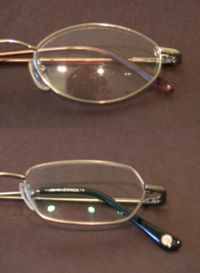
Photo from wikipedia
Abstract This paper presents a novel approach of utilizing a spectrally selective coating inside the absorber tube of a solar parabolic collector for enhanced photothermal conversion. The photothermal performance of… Click to show full abstract
Abstract This paper presents a novel approach of utilizing a spectrally selective coating inside the absorber tube of a solar parabolic collector for enhanced photothermal conversion. The photothermal performance of a hybrid system that incorporates an internal coating and nanofluid is analyzed in the present work. The internal coating developed is a composite of PMMA/CuO/Epoxy and as applied using the simple dip-coating technique. The maximum weighted solar absorptance of the internal coating was found to be 57.51%. The significance and interactions of the coating process variables, like concentrations of PMMA and CuO and the number of dips, were analyzed using the central composite design (CCD) of response surface methodology (RSM). An optimized coating (Concentration of PMMA and CuO: 4997.7 and 170.8 mg/30 ml, Number of Dips: 4) was arrived at based on the desirability function. Prior to the introduction of internal coating on the parabolic solar collector, a lab-scale photothermal conversion study was carried out using the optimized internal coating. The results revealed the superior performance of the internal coating when compared with that of pure surface absorption and direct absorption. Finally, the optimized internal coating was incorporated in a parabolic collector, with CuO nanofluid as a working fluid. Maximum efficiency of 62.80% was obtained for the hybrid system the internal coating and CuO nanofluid, compared to 31.6% for a direct absorption solar collector.
Journal Title: Journal of Cleaner Production
Year Published: 2021
Link to full text (if available)
Share on Social Media: Sign Up to like & get
recommendations!